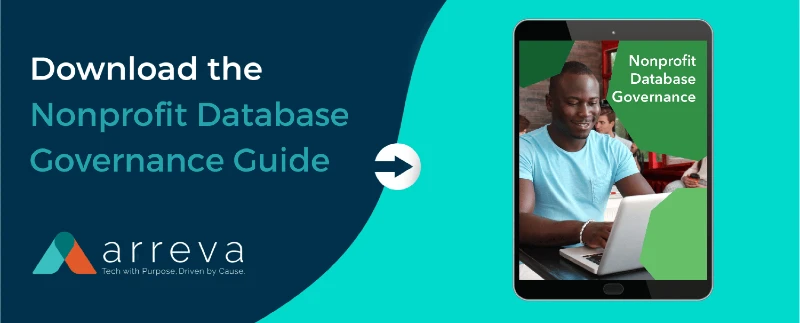Nonprofit Data Diaries Part 1: Communication and Solicitation

We hear a lot about Big Data and how it has transformed the way we live, from deciding which ads we see to finding cures that may save our lives. There’s no doubt about its power to influence and inform.
But what about the immense power of little data – the data that you keep in your files about your donors, volunteers, and other constituents? Your list may seem small compared to Amazon’s or Facebook’s, but it’s likely the most valuable asset your organization owns. It determines whether you can meet your funding goals, and more importantly, whether you can grow. Imagine for a moment what it would mean to your organization to lose your donor list.
It’s not a pretty thought.
Staff who use the database most often view it as a tool to help them do their jobs in the most effective way possible, and that’s certainly a great way to think about it. However, from the organization’s point of view, the donor database provides a critical repository for institutional memory. Staff members come and go. But your donors give to your cause, not to your staff. That means they stick around and expect new staff to know all about them, their favorite ways of being contacted, the expectations for their giving, the events they like to be part of, their history of involvement, and every other aspect of their relationship with your organization.
Yes, it is important for individuals to use the system to get their jobs done, but the data belongs to your organization, not to you or your staff. Your data will only reach its full potential if you treat it with care. And treating it with care means developing policies and procedures that are written down, understood, and followed.
The first step toward creating these policies and procedures is focusing on data integrity, that is, making sure your data is accurate, up-to-date, and complete. A focus on integrity will ensure that you can successfully build relationships with your constituents, that you can provide accurate information for decision-making, and that your organization is accountable to your community.
The following provides some examples of what you should be thinking about concerning data integrity in communication and solicitation:
Communication
- Enter names and salutations carefully so that you are respectful of your constituents’ preferences. Use alternative names, if possible, to reflect personal relationships.
Example: if your CEO knows someone personally, don’t start the letter with “Dear Mr. and Mrs. Smith”, requiring her to cross it out and put “John and Mary.”
- For people who still like snail mail, make sure the address is entered so that it will work smoothly when you run a mail merge. In addition, take care to understand exactly where the letter is to be sent – home, office? Vacation home during certain times of year?
- Email lists tend to accumulate invalid entries over time. Sometimes these are caused by simple typos; more often, however, it’s because people change jobs or email providers. Sending emails from a list full of errors can cost money and time. In Exceed Beyond, you can check for duplicate email addresses to avoid this issue.
- Some people prefer email, some prefer snail mail, some want no mail, and many people don’t want phone calls. There’s nothing more annoying than asking to be taken off a list but still receiving mail or calls. It reflects badly on your organization’s management skills. Build a system to keep this straight and use it
- Decide how you are going to mark people who are deceased, have moved away from your area, or have opted out.
Cultivation/Solicitation Cycle
- A key to good fundraising is to target different groups with different approaches. This is where your data can really help. Carefully design your system for attaching codes or tags to your prospects so you can accurately segment them for special treatment.
- One person in your organization should have oversight of this system. If you allow anyone to define and add codes or tags willy-nilly, you’ll end up with a useless mess. When you have staff turnover, make sure the new person knows and uses the rules. Perhaps more importantly, make sure the departing staff member leaves all of her knowledge with you when she leaves!
- Major donors and prospects need special attention. Decide what defines a major donor and develop a system for marking them. You don’t want to send a generic annual gift solicitation to a major prospect – they might give you a generic annual gift and think they’re done!
- If your system allows for creating user-defined fields, the same rules you use for codes and tags apply. Think carefully about what fields you need and how they should be used. Allow only one person to create these fields and set their parameters.
- As you take donors and prospects through the cultivation/solicitation cycle, it is important to leave a trail behind to document what activities have taken place. Set some rules about how to enter information about phone calls and meetings, invitations, solicitations, and anything else that will help with the next step, whatever it might be. Don’t allow all of this valuable information to reside only in someone’s head.
Your nonprofit can vastly increase the usefulness of your donor data by creating these guidelines. Remember to think of data integrity when you think of data security, and your organization — and your donors — will thank you.
Read parts 2 & 3 of the Nonprofit Data Diaries now:


